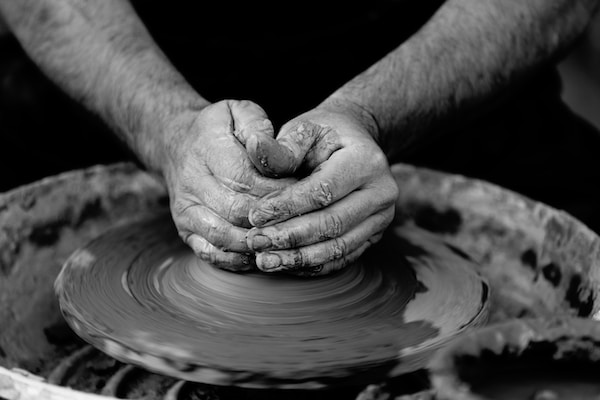Artistic Endeavors in Retirement: A Guide to Cultivating Creativity and Joy
Embarking on the journey of retirement opens up a horizon of possibilities, one of the most enriching being the opportunity to embrace your artistic side. The years of retirement provide the perfect canvas for expressing creativity that might have been dormant during the bustling years of career and family commitments. Delving into artistic pursuits during this phase of life is not just a leisure activity; it’s a pathway to personal fulfillment, cognitive stimulation, and emotional enrichment.
Whether you have a background in art or are stepping into this world for the first time, retirement offers the freedom and time to explore various forms of artistic expression. This guide is designed to help retirees navigate the exciting journey of rediscovering their creativity through art. It covers how to get started, find your medium, and integrate art into your daily life, transforming the golden years into a period of artistic exploration and discovery.
Why Embrace Art in Retirement?
Artistic endeavors provide a channel for self-expression and introspection. They can be therapeutic, helping to manage stress and improve mental health. Additionally, the act of creating art stimulates the brain, fostering continued learning and cognitive health. For retirees, art can also be a social activity, providing opportunities to connect with others through classes, clubs, or exhibitions.
Starting Your Artistic Journey
- Discover Your Interests: Begin by exploring different forms of art to discover what resonates with you. It could be painting, sculpture, photography, drawing, pottery, or even digital art. Visit local galleries, museums, or art fairs to draw inspiration and find what kind of art excites you.
- Take a Class or Workshop: Enroll in a class or workshop at a local community center, art school, or online platform. Classes are great for beginners as they provide structured learning and guidance from experienced instructors.
- Gather Materials and Tools: Once you’ve chosen a medium, gather the basic materials and tools needed. Start with essential items and expand your collection as you grow in your craft.
- Create a Dedicated Space: Set up a dedicated space in your home where you can work uninterrupted. It doesn’t have to be large – a corner in a room or a small studio space can suffice.
- Practice Regularly: Dedicate regular time to practice your art. Consistency is key to developing your skills and finding your unique style.
Exploring Different Art Forms
- Painting and Drawing: These are some of the most accessible forms of art. Start with basic sketches and experiment with different mediums like watercolor, acrylic, or oil.
- Photography: Photography is a great way to capture the beauty of the world around you. Start with a basic camera or even a smartphone, and learn about composition, lighting, and editing.
- Sculpture and Pottery: Working with clay or other materials to create three-dimensional art can be incredibly satisfying. Look for local pottery studios or sculpture workshops where you can learn and practice.
- Digital Art: If you’re tech-savvy, digital art offers endless possibilities. You can create illustrations, animations, or digital paintings using software and a tablet.
- Crafts and Textiles: Consider crafts like knitting, quilting, or woodworking. These activities are not only creative but also produce functional and beautiful items.
Integrating Art into Your Daily Life
- Join an Art Community: Connect with local or online art communities. This can provide support, inspiration, and opportunities to showcase your work.
- Attend Art Exhibitions and Fairs: Regularly visiting art exhibitions and fairs can be a great source of inspiration and a way to keep up with current trends and techniques.
- Set Personal Projects or Goals: Challenge yourself with personal projects or goals, such as completing a painting series or participating in an art show.
- Share Your Work: Don’t hesitate to share your work with family, friends, or on social media. Feedback can be a powerful motivator and source of encouragement.
Benefits of Artistic Engagement in Retirement
- Cognitive Benefits: Artistic activities can improve memory, problem-solving skills, and hand-eye coordination.
- Emotional Well-being: Art provides an emotional outlet, helping to express feelings and reduce stress.
- Social Interaction: Art classes and communities offer social interaction, reducing feelings of loneliness or isolation.
- Physical Health: Certain forms of art, like sculpture or pottery, can be physically engaging and help in maintaining motor skills.
In conclusion, embracing your artistic side in retirement is not just about filling your days with activities; it’s about embarking on a journey of self-discovery and creative expression. Art, in its myriad forms, offers a unique blend of emotional, cognitive, and social benefits, making it an ideal pursuit for those in their golden years.
Whether it’s through painting, photography, sculpture, digital art, or crafts, each brushstroke, snapshot, and creation is a reflection of your inner world and a celebration of your life’s experiences. By integrating art into your daily routine, joining art communities, and sharing your work, you not only enhance your skill but also enrich your life with a sense of purpose and connection.
Remember, the beauty of art in retirement lies in the freedom to explore without boundaries, to create without expectations, and to enjoy the process of making something uniquely yours. As you delve into the world of art, let it inspire and invigorate your retirement, turning it into a time of vibrant creativity and personal growth.

